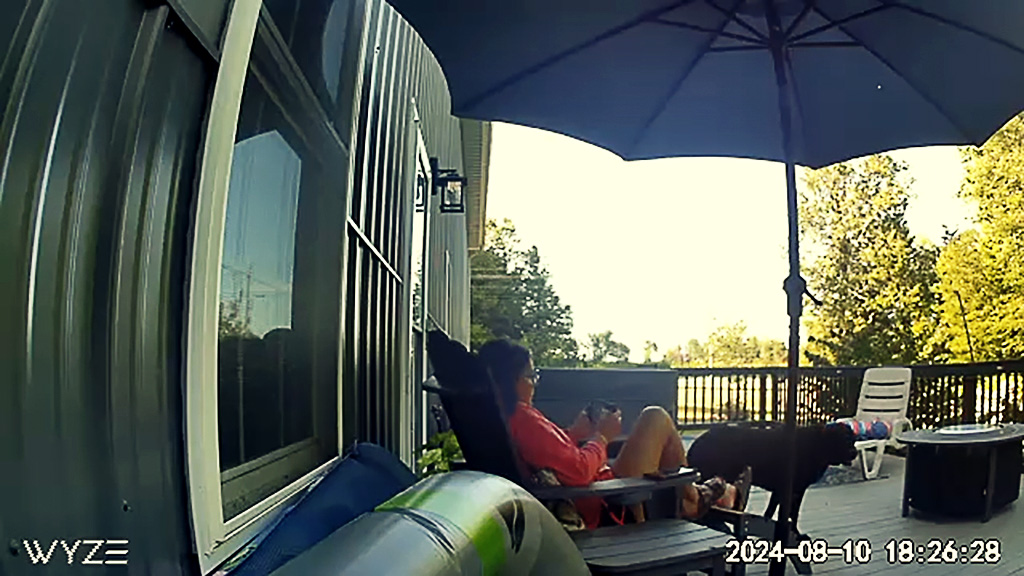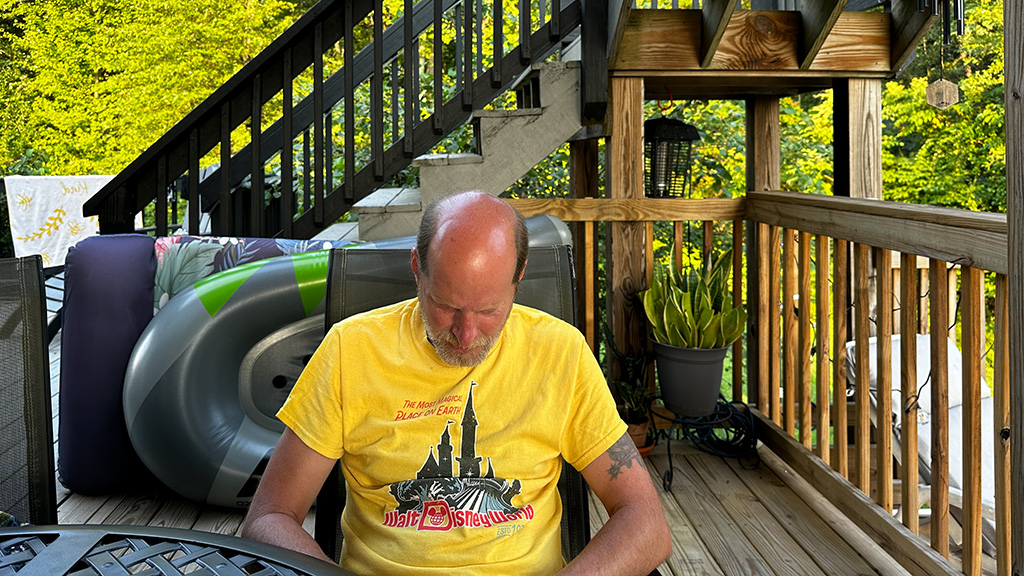Every single post here for at least the last decade has included a photo. I starting this journal/blog at a time when digital photographs were pixelated and small (check out this photo I shared in 2008!). Here we are today, when even our smartphones produce high quality images.
But it wasn’t just the quality of photos our digital cameras could render that determined the size of images shared online in the earlier days. User’s download speeds and bandwidth limitations set by internet providers also had to be considered.
For most of us, those things don’t matter anymore. Now we can decide what size and aspect ratio we like best…
Comparing the sizes visually…
- 16:9 — This is widescreen format and it’s the most popular size for blogging and photos taken by smartphones. Even most security cameras use 16:9, as evidenced in the photo below. (The photo also doubles as evidence of global warming… wearing a sweatshirt on an Indiana afternoon in August.)

- 3:2 — This size is standard for DSLR cameras — it’s the old 35mm camera size. DSLR’s often won’t let you change the aspect ratio if you use the viewfinder… it’s only an option when you’re shooting from the display.

Which do you prefer?
Maybe you don’t have a preference… and maybe you’ve never even noticed photo sizes before. I think if you’re viewing a web page from a phone, the 3:2 might be a bit better than 16:9. The 3:2 ratio also helps reduce clutter in some instances. For example, if the photo below was 3:2, you wouldn’t see as much background junk.

I don’t know which I like best. What say you?
Now you know: Howard Hughes once refused to leave a hotel room in Las Vegas. Instead of leaving, he decided to purchase the entire hotel. Hughes then expanded his holdings in the city, became the largest employer in Nevada, and was thought to be largely responsible for the modern transformation of Las Vegas.
